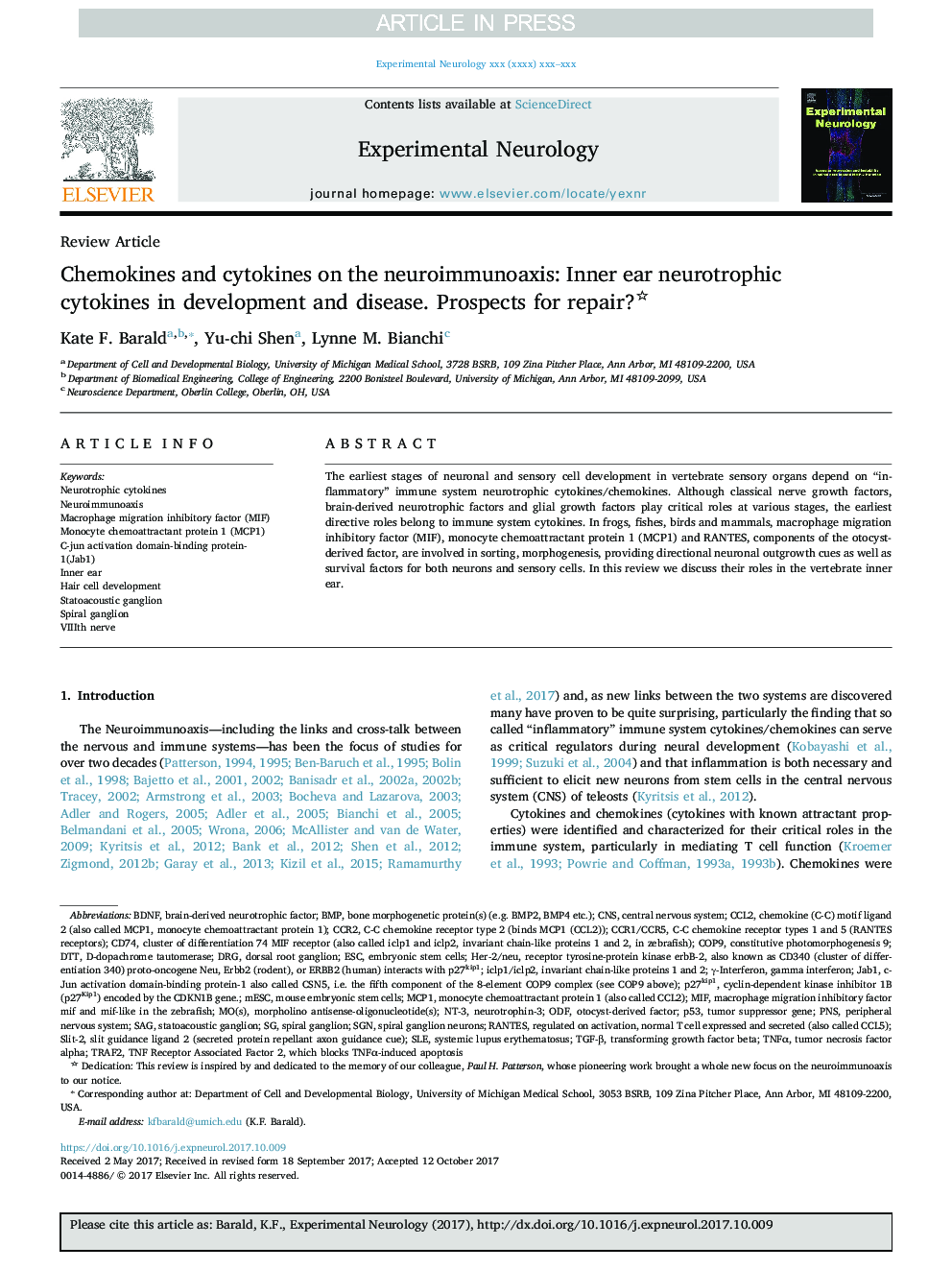| Article ID | Journal | Published Year | Pages | File Type |
|---|---|---|---|---|
| 8684701 | Experimental Neurology | 2018 | 8 Pages |
Abstract
The earliest stages of neuronal and sensory cell development in vertebrate sensory organs depend on “inflammatory” immune system neurotrophic cytokines/chemokines. Although classical nerve growth factors, brain-derived neurotrophic factors and glial growth factors play critical roles at various stages, the earliest directive roles belong to immune system cytokines. In frogs, fishes, birds and mammals, macrophage migration inhibitory factor (MIF), monocyte chemoattractant protein 1 (MCP1) and RANTES, components of the otocyst-derived factor, are involved in sorting, morphogenesis, providing directional neuronal outgrowth cues as well as survival factors for both neurons and sensory cells. In this review we discuss their roles in the vertebrate inner ear.
Keywords
Statoacoustic ganglionMCP1NT-3CCR2CD74TRAF2SGNSAGd-dopachrome tautomeraseP27kip1ODFmESCJab1DTTTGF-βCOP9γ-interferonDRGp53CCL2TNFαdorsal root ganglionBDNFHER-2/neuGamma interferonTransforming Growth Factor Betatumor necrosis factor alphaESCCNSMouse embryonic stem cellsEmbryonic stem cellscentral nervous systemperipheral nervous systemMIFMacrophage migration inhibitory factor (MIF)Brain-derived neurotrophic factorSystemic lupus erythematosusSLEspiral ganglionBMPRANTESneurotrophin-3Spiral ganglion neuronsTumor suppressor genePNSInner ear
Related Topics
Life Sciences
Neuroscience
Neurology
Authors
Kate F. Barald, Yu-chi Shen, Lynne M. Bianchi,
